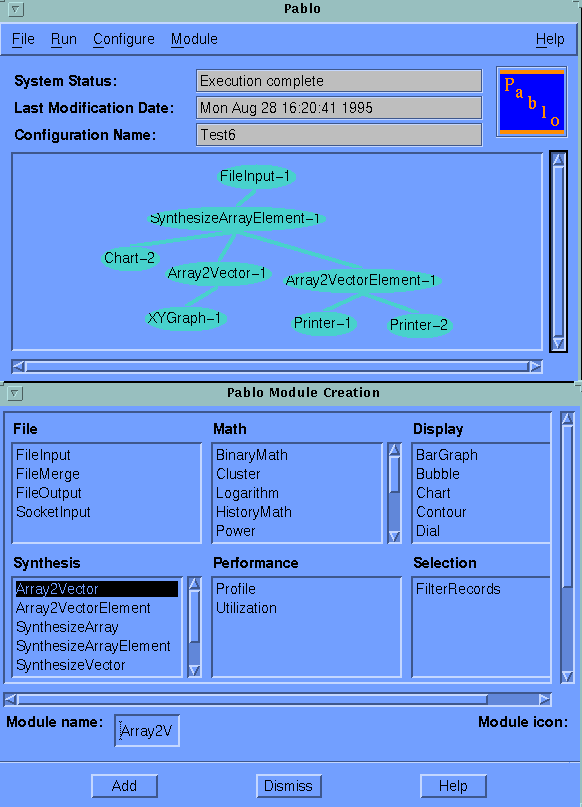
Approach: The need for new analysis modules and new functionalities was identified during the Pablo evaluation stage. The parallel multigrid Holmhertz Solver, developed under the ESS Project, was used as the test case for Pablo's ability to provide an adequate tool for the performance evaluation needs of typical ESS applications. Pablo source code was carefully studied and new modules and new functionalities have been developed using C++, X11R5 and Motif.
Accomplishments: Two new analysis modules: one extracts a vector from a two-dimensional array, the other builds up vector elements and their index from a two-dimensional array. A mapping function for the SDDF(Self Describing Data Format) files has been developed and tested. The new extracting vector modules manipulate part of an array, taking all elements of a given row or column to make up a vector. For a given record and a given field of the SDDF data, the new SDDF mapping function maps a value within a given range to a specific value based on its original value and some user specified rules.
Significance: The two new modules that extract vector and vector elements from a two dimensional array extended Pablo's ability for performance evaluation as an user now can extract and analyze a row or a column of performance data from an array. The new mapping function fills in a rather important gap between the trace data and the analysis modules' input data requirements (i.e., the values of some message types on the Paragon can be either less than zero or larger than 10,000, which make them unsuitable for being array index). This mapping function makes it possible for the first time for the trace data produced by the parallel multigrid Holmhertz Solver to be analyzed by the Pablo's data analysis system.
Status/Plans: There are many things needed for Pablo to be more user friendly and to satisfy various needs of performance evaluation. The most urgently needed item is a Fortran instrumentation environment, since Fortran is still the most widely used programming language in the scientific computation community. We will continue to work with the University of Illinois and the Scalable I/O Initiative to understand the ESS performance issues.
Point of Contact:
Chuigang Fu
Jet Propulsion Laboratory
cfu@smokeymt.jpl.nasa.gov
(818) 354-0969